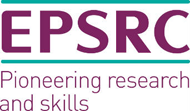Mugahid Ali
Mugahid Ali
Ali joined the CDT in February 2015, having previously completed a Masters in Photonics and Optoelectronic Devices at the University of St Andrews.
CDT PhD Project:
Plasmonic Antennas for Extreme Light Concentration and Harvesting
Supervisors:
Dr Fumin Huang (Queen's University Belfast)
Professor Marc Sorel (University of Glasgow)
The sustained improvements in the quality of life is driven by the development of a wide range of versatile technologies in telecommunications, healthcare and consumer electronics, which critically depend on the data storage capacities of the relevant devices in use. Moreover, the “cloud” computing has attracted the world’s population interest to store the data on the “cloud” and data storage demand has grown exponentially even for small personal devices eg smartphones. Hence, the ability to store digital information has become a growing concern. However, the areal density of current data storage technology such as those employed on hard disk and solid state drives will hit bottleneck soon, which can hardly meet the ever-growing demand of the booming digital economy in the near future. Novel technologies are urgently needed to break the bottleneck of the areal density of current data storage devices.
Heat-Assisted Magnetic Recording (HAMR) is an exciting novel technology that could potentially provide data storage density up to 50 Tb/in2, which is about 100 times as the current disk storage density. This will be achieved on ‘hard’ magnetic materials with a very high coercivity, which allows data to be recorded on very small bit sizes. However, the weak magnetic fields of current writing heads cannot magnetise the hard magnetic materials directly, which need to be ‘soften’ first before data can be written on it. In HAMR technology, the disk is locally heated by focusing laser to an extremely small spot (less than 50 nanometres) on the magnetic film through a plasmonic antenna (also called near field transducer), which for example can be a very sharp metallic tip, analogue to a nanoscale lightening-rod. By exciting the surface plasmons in the antenna, light can be strongly concentrated and extremely confined to a very small spot well below the diffraction limit, hence locally heating the recording disk above the Curie temperature to ease the process of writing data.
To achieve the local heating above the Curie temperature, the required light intensity in the nanospots is about 100,000,000 times the intensity of the light of the sun on the earth’s surface. Unfortunately, all the best known plasmonic materials (gold, silver, aluminium, and copper) are soft noble metals with low melting points, which will deform and melt at such high temperatures. This poses as one of the main challenges of the HAMR technology.
The main objective of the proposed research is to develop refractory plasmonic materials, metamaterials and antenna structures that can work at elevated temperatures while still retain excellent plasmonic properties, to design and fabricate novel plasmonic transducers elements to be integrated in an efficient light delivery system for HAMR. The research aims to provide a systematic investigation of the optical and thermal properties of composite plasmonic materials made of noble metals and refractory materials, to combine both the superior plasmonic properties of noble metals and the outstanding thermal properties of refractory materials.
This project is in alignment with a number of EPSRC’s strategy research areas, such as Photonic materials and metamaterials, Plasmonics, and Materials engineering-metals and alloying. UK is leading in the world in many of these research areas, which maintain the strong support from the EPSRC.
This project is a collaborative one between Queen’s University Belfast and University of Glasgow. The research took advantage and benefited from the state-of-the-art experimental facilities and the academic experience available at both universities. The project is strongly supported by a range of industrial partners, bringing together key companies who could form a complete UK manufacturing supply chain for HAMR technology. These companies include IQE as a supplier of custom epitaxy, Oclaro for volume laser production and Seagate for volume manufacturing of magnetic recording heads.





